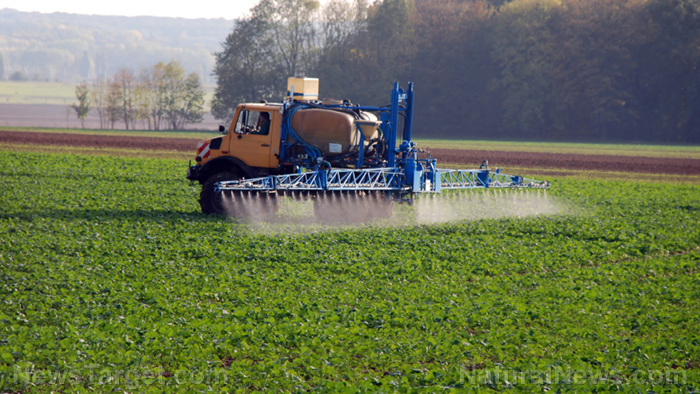Air pollution now comes from consumer and industrial products as much as vehicles
03/14/2018 / By Isabelle Z.

Car emissions take a lot of the blame for air pollution, but it looks like they could soon be eclipsed by consumer and industrial products.
A new study published in Science has found that as cars get increasingly cleaner and tailpipe emissions continue to drop, the emissions that come from many of our everyday products are now accounting for half of the volatile organic compounds, or VOCs, that create air pollution.
You can find VOCs such as toluene, formaldehyde and acetone in many popular products ranging from household cleaners to personal care items. Some of the culprits include air fresheners, glues, finishes, gas stoves, carpets, cleaners, pesticides, sealers, and composite wood or particleboard. You can also find VOCs in the products you use on your body on a daily basis, including nail polish and nail polish remover, perfumes and colognes, rubbing alcohol and hairspray.
These chemicals aren’t just bad for the environment; they’re also dangerous to your health. Short-term effects include nose and eye irritation and asthma attacks. In the long term, however, they can potentially cause cancer and damage to your central nervous system, kidneys, and liver.
VOCs can harm you via direct inhalation, and they can also react with other molecules that are in the air to create fine particulate matter and ozone. This contributes to chronic lung problems and can cause breathing difficulty.
With air pollution being identified as the fifth biggest health risk factor around the world, addressing the sources of VOC emissions has never been more urgent. Unfortunately, VOCs are not being regulated as vigorously as auto emissions. In fact, the law regulating the personal care industry hasn’t been updated by the federal government since 1938 in the U.S. In Europe, however, it’s a different story. More than 1,300 personal care product ingredients have been restricted or banned there.
How can you limit your VOC exposure?
If you want to minimize your exposure to VOCs and avoid contributing to air pollution, there are a few simple steps you can take. Instead of toxic cleaning sprays, use microfiber or cotton cloths dampened with water. You can mix baking soda and vinegar to make a natural cleaner that will work on many different surfaces.
Look out for products that are formulated specifically to have low or no VOCs. For example, you can find paints and wood stains with Green Seal-11 certification or look for labels that declare the product is free of VOCs.
One group of VOCs you need to be particularly vigilant about is phthalates, which are commonly found in air fresheners and have been linked to reproductive and development disorders, as well as birth defects. They’ve even been found in air fresheners labeled as “all natural.” If you’d like to give your room a pleasant aroma, consider an essential oil diffuser instead.
If you must buy products that contain VOCs, buy small quantities. Keep them closed tightly and try to use them as fast as possible because gases can leak out of closed containers. Follow all of the safety precautions on the label, and be sure to increase the ventilation in your home during use. They also need to be disposed of properly following the collection protocol for toxic household wastes in your area.
According to the EPA, the concentrations of VOCs can be ten times higher indoors than outdoors. It’s time to spread awareness about this dangerous problem so that people can preserve their own health as well as that of our environment.
See Pollution.news for more news coverage.
Sources for this article include:
Tagged Under: air quality, clean air, cleaning products, Emissions, environment, formaldeyde, paint, Personal care products, phthalates, VOCs, volatile organic compounds




















